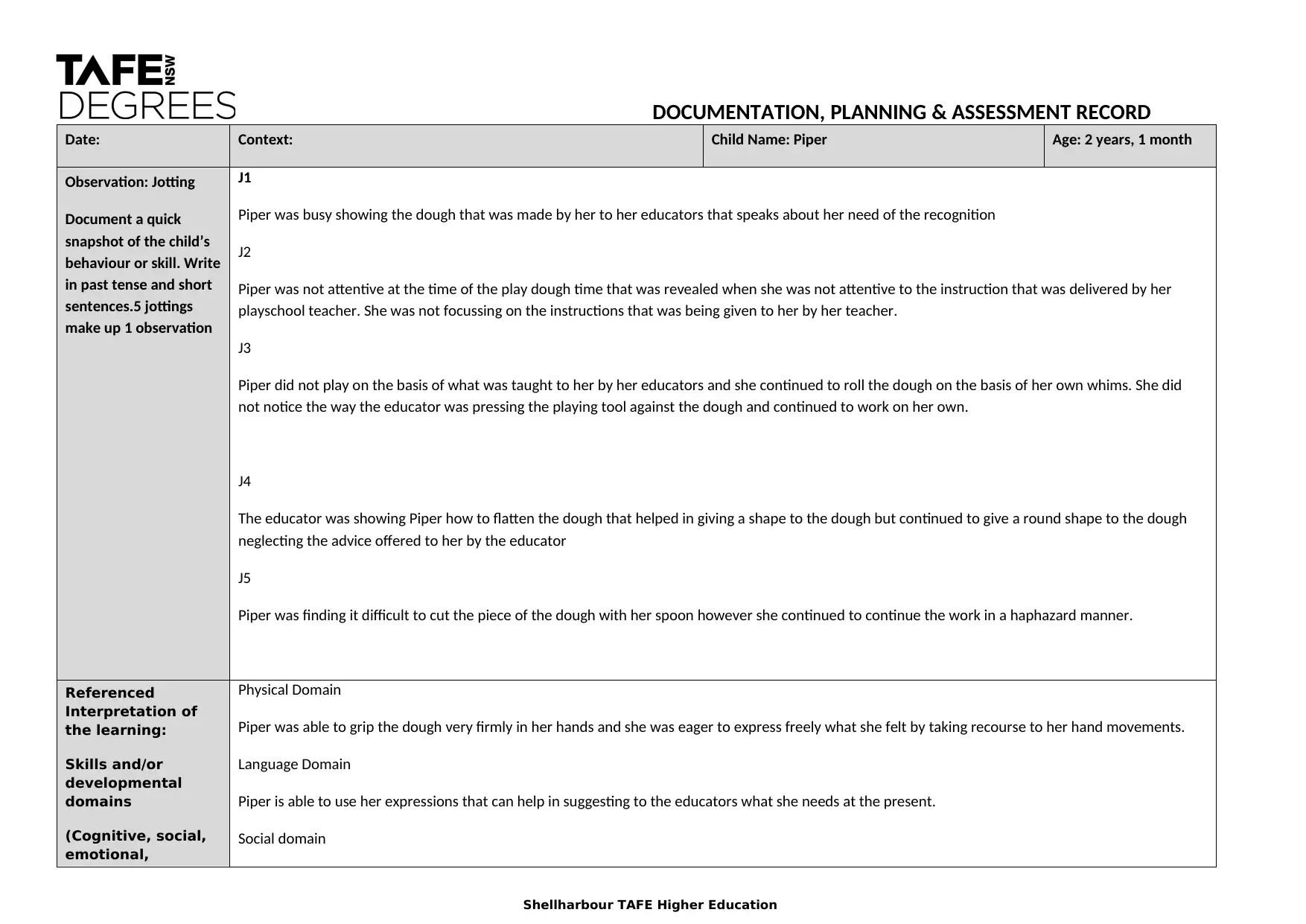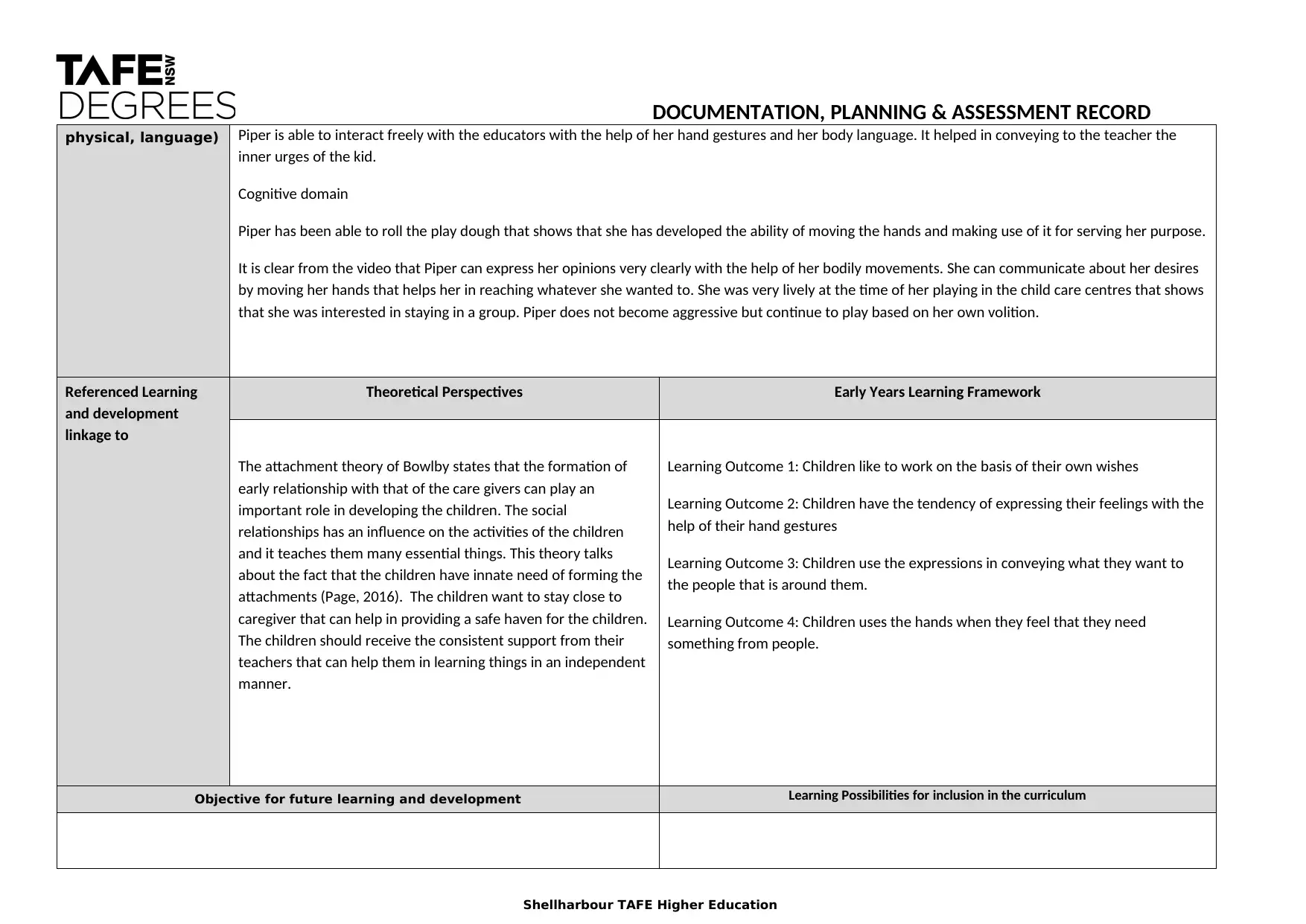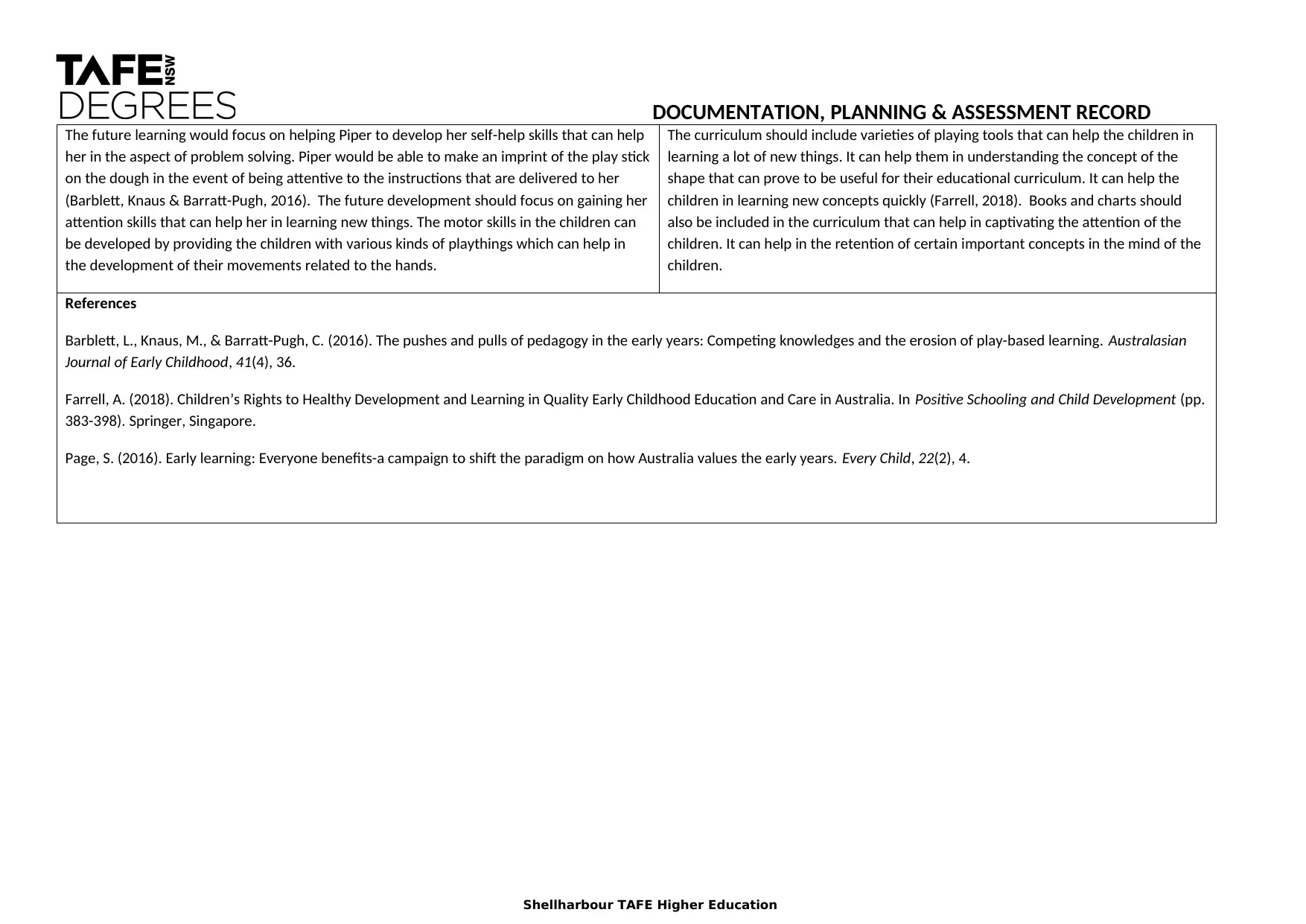Documentation, Planning & Assessment Record
VerifiedAdded on 2023/04/05
|3
|943
|319
AI Summary
This document is a record of observations and assessments for a child named Piper. It includes observations of Piper's behavior and skills, as well as interpretations of her learning and development in various domains. The document also discusses the theoretical perspectives and learning outcomes related to Piper's development, and suggests future objectives for her learning and development.
Contribute Materials
Your contribution can guide someone’s learning journey. Share your
documents today.
1 out of 3









![[object Object]](/_next/static/media/star-bottom.7253800d.svg)